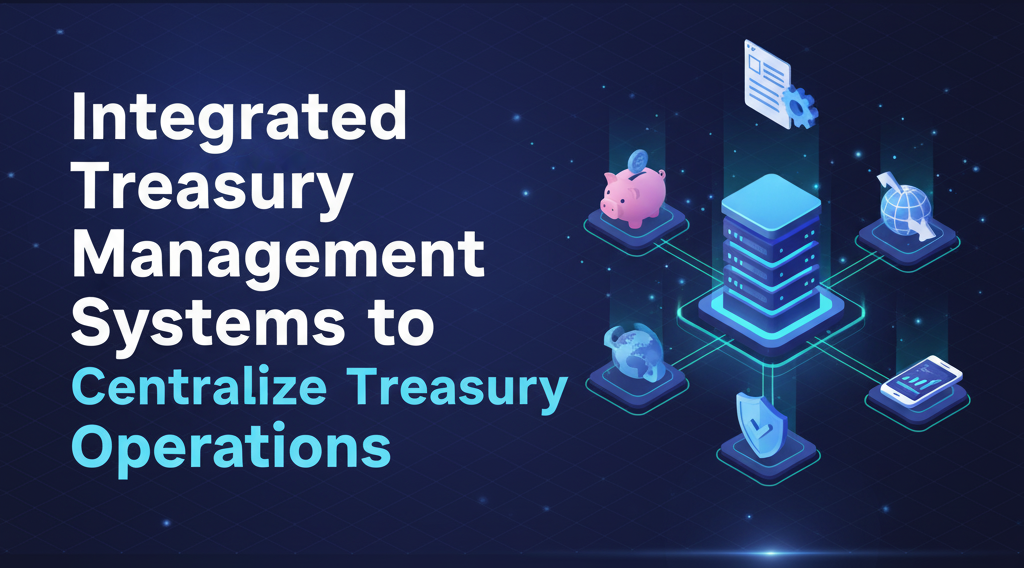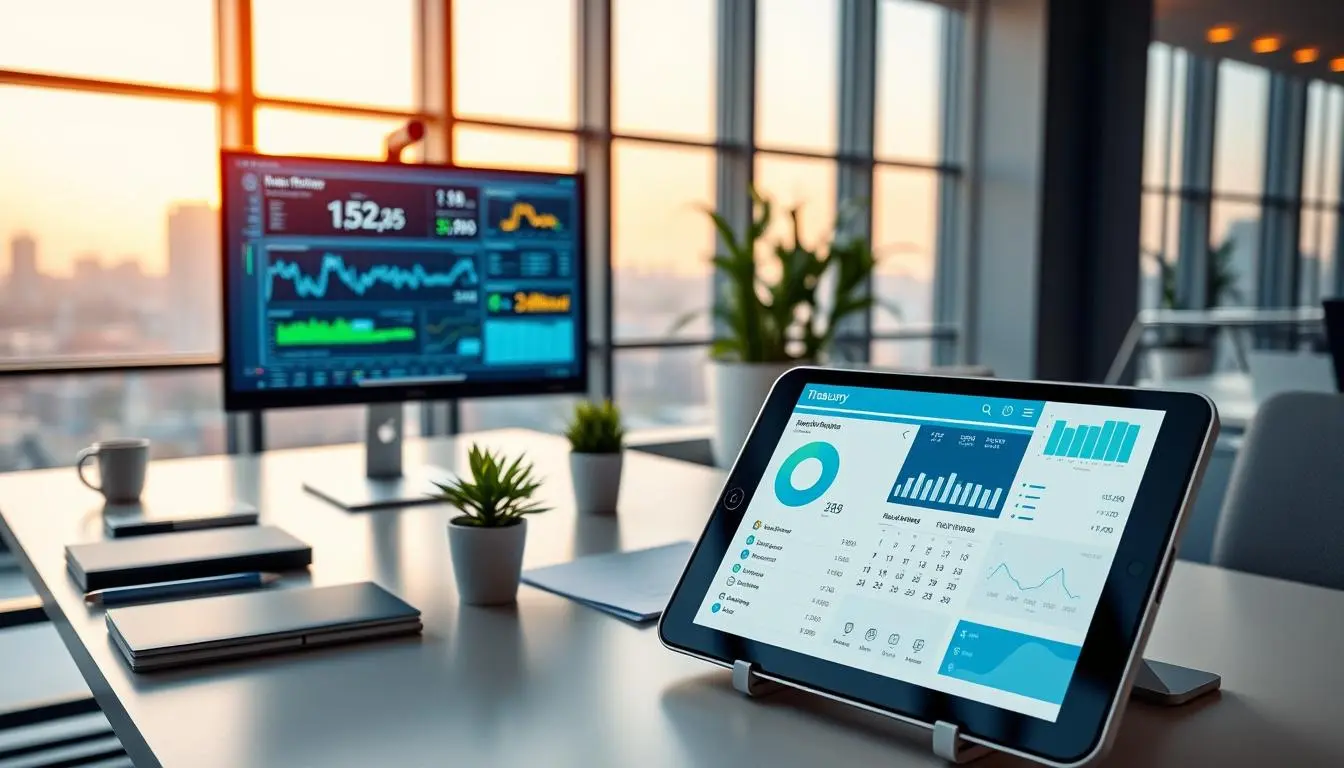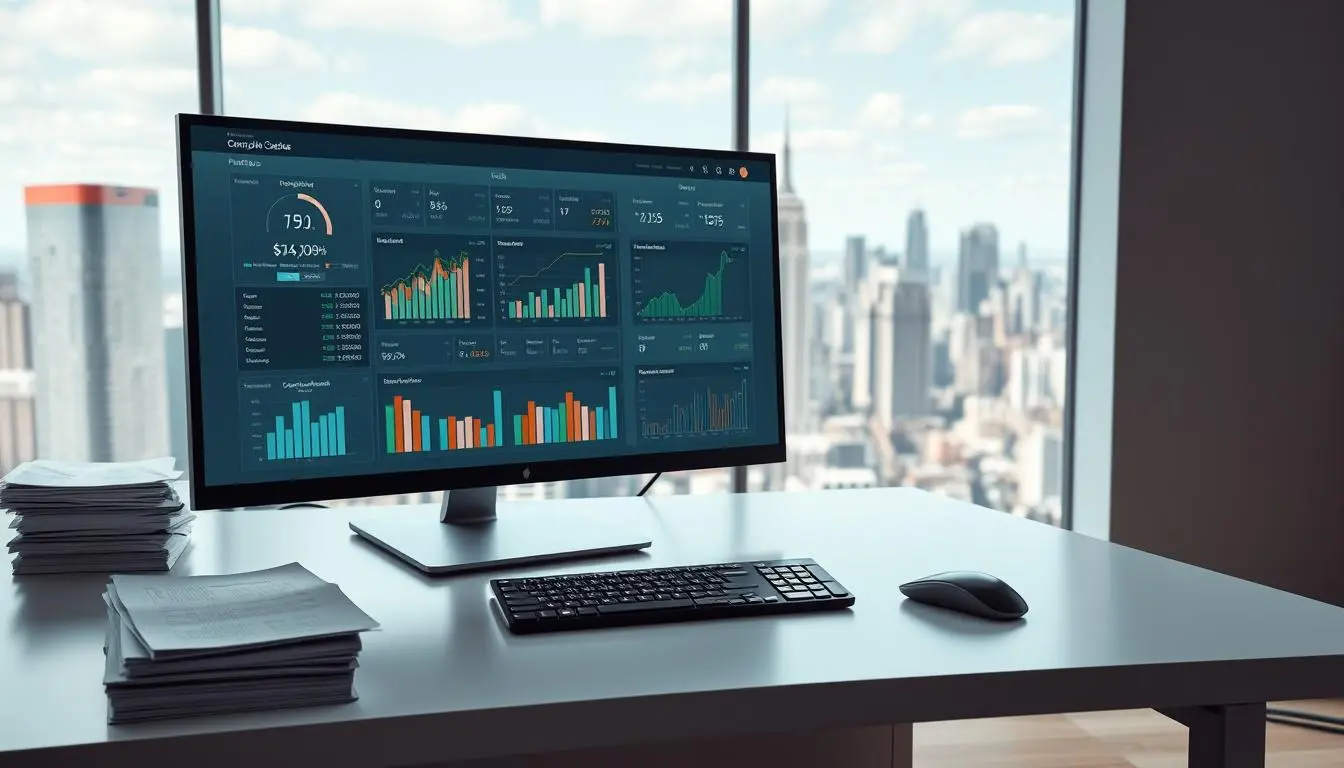Integrated Treasury Management Systems to Centralize Treasury Operations
In today’s fast-paced financial world, managing cash, liquidity, and financial risk effectively has become a top priority for businesses. Treasury departments are no longer just record-keepers; they are strategic units responsible for optimizing liquidity, minimizing risk, and improving financial visibility. But with operations spread across different systems, banks, and regions, treasury teams often struggle with fragmented processes.

This is where Integrated Treasury Management Systems (TMS) step in. These systems help centralize treasury operations, streamline workflows, and provide real-time insights into a company’s financial health. In this blog, we’ll explore what an integrated TMS is, how it works, its benefits, and why it’s becoming essential for modern businesses.
What is an Integrated Treasury Management System?
An Integrated Treasury Management System is a unified software platform that automates and consolidates all treasury activities within an organization. It combines multiple treasury functions such as cash management, liquidity planning, foreign exchange, payments, and risk management into a single digital solution.
Instead of using separate tools or spreadsheets for different tasks, an integrated TMS connects all financial operations under one roof. This gives treasury teams a real-time view of the organization’s cash position, funding needs, and financial exposure, leading to faster and more informed decision-making.
The Need for Centralized Treasury Operations
Treasury teams often manage accounts across multiple banks, currencies, and subsidiaries. Without a centralized system, this creates challenges like inconsistent financial data across regions, manual errors in reconciliation and forecasting, delayed reporting due to disconnected systems, and lack of visibility into real-time cash positions.
These challenges increase operational risks and reduce efficiency. Centralizing treasury operations with an integrated TMS helps organizations standardize workflows, improve compliance, and gain better financial control.
How Integrated Treasury Management Systems Work
An integrated TMS connects to a company’s ERP systems, banking networks, and financial data sources. Through secure APIs and data integrations, it automates the flow of financial information in real time.
Here’s how it typically works:
- Data Integration – The system collects data from multiple sources such as bank statements, payment gateways, ERP platforms, and investment accounts.
- Data Processing – It consolidates and categorizes transactions, balances, and forecasts into a centralized dashboard.
- Automation – Routine tasks like payments, reconciliations, and reporting are automated to save time and reduce human error.
- Analytics and Insights – The TMS provides insights into liquidity, cash flow, and risk through interactive dashboards and predictive analytics.
- Compliance and Security – The system ensures all transactions adhere to regulatory standards and are securely logged.
In short, an integrated TMS acts as the control center for all treasury operations, combining automation, visibility, and intelligence.
Key Features of an Integrated Treasury Management System
To truly centralize operations, a robust TMS includes a range of powerful features. Below are some of the most important ones:
1. Cash and Liquidity Management
This feature allows treasury teams to view global cash positions in real time, forecast future liquidity needs, and ensure funds are allocated efficiently. It helps businesses avoid idle cash while maintaining sufficient liquidity for operations.
2. Bank Account Management
Integrated systems track all bank accounts, transactions, and balances in one place. They simplify account opening, closing, and authorization processes, ensuring complete visibility across global banking relationships.
3. Payment Automation
An integrated TMS automates payments and approvals with built-in workflows and audit trails. It supports multiple payment formats, reduces fraud risk, and speeds up transaction processing.
4. Risk Management
With market volatility affecting interest rates and currency values, risk management tools within the TMS help identify exposures and suggest hedging strategies. Real-time analytics ensure proactive rather than reactive risk control.
5. Cash Flow Forecasting
Accurate forecasting is vital for better financial planning. The TMS uses historical data and AI-driven analytics to create dynamic cash flow forecasts, helping businesses make better investment and funding decisions.
6. Reconciliation Automation
Reconciliation is one of the most time-consuming treasury tasks. Modern TMS platforms, such as Kosh.ai, automate bank reconciliations by matching transactions across systems in seconds, ensuring accuracy and saving hours of manual work.
7. Compliance and Audit Trails
Integrated treasury systems ensure compliance with local and international financial regulations. Automated logs and digital audit trails make reporting easier during audits or regulatory checks.
8. Reporting and Analytics
Comprehensive dashboards allow treasurers to monitor key performance indicators (KPIs) such as cash flow, working capital, and investment performance in real time.
Benefits of Using an Integrated Treasury Management System
Implementing an integrated TMS brings measurable improvements across the organization. Let’s explore the main benefits in detail:
1. Centralized Control
All treasury activities—from cash management to payments—are managed in a single platform. This eliminates data silos and creates one version of truth for all financial information.
2. Improved Visibility
Real-time dashboards help businesses monitor global cash positions, liquidity levels, and exposure. This transparency supports better and faster decision-making.
3. Higher Accuracy and Efficiency
Automation reduces the risk of manual errors and speeds up time-consuming processes like reconciliation and reporting. This allows treasury professionals to focus on strategic planning instead of repetitive tasks.
4. Enhanced Risk Management
Integrated analytics and predictive models help treasurers identify potential risks early, such as currency fluctuations or liquidity shortages, and take timely action.
5. Cost and Time Savings
With automation, treasury teams save countless hours and operational costs. Processes that used to take days can now be completed in minutes.
6. Scalability and Flexibility
Integrated systems grow with the business. Whether expanding into new markets or adding new entities, a TMS adapts easily to changing needs.
7. Regulatory Compliance
Built-in compliance modules ensure adherence to tax, banking, and reporting regulations. This helps avoid penalties and enhances corporate governance.
Why Centralization Matters for Modern Treasury
In a global business environment, decentralized treasury operations can quickly become inefficient. Managing financial data across spreadsheets or separate systems often leads to delays, inconsistencies, and risks.
By contrast, a centralized treasury operation powered by an integrated TMS offers consistency through standardized processes across all regions and subsidiaries, transparency through a clear real-time picture of the company’s financial position, speed through faster decision-making, and security with centralized controls that mitigate risks of fraud or data leaks.
As digital transformation accelerates, centralization through integration is no longer optional—it’s a strategic necessity.
Role of Integration in Treasury Transformation
Integration is the foundation of a truly modern treasury setup. A system that seamlessly connects ERP, banks, and other financial platforms ensures uninterrupted data flow and real-time accuracy.
Some ways integration enhances treasury transformation include connecting with ERP systems to sync accounting and payment data automatically, integrating with banking APIs for real-time balance updates, linking with investment and trading platforms for better asset management, and connecting with reconciliation tools like Kosh.ai for instant transaction matching and automated reporting.
The goal is to eliminate data fragmentation and create an ecosystem where treasury functions work as one unified process.
Also Read: Integrated Treasury Management System with AI-Powered Insights
Challenges in Implementing an Integrated TMS
While the benefits are undeniable, implementation comes with its share of challenges: complex integrations between systems and banks, change management as teams adapt to new workflows, cost considerations during implementation, and data migration from legacy systems.
However, these challenges are temporary and outweighed by the long-term gains in efficiency and accuracy. Partnering with a reliable TMS provider can make the transition much smoother.
Choosing the Right Treasury Management System
Selecting the right TMS depends on your business size, industry, and operational complexity. When evaluating options, consider these factors: integration capabilities with ERP and banks, automation level in cash management and reconciliation, scalability, user experience, security standards, and analytics and reporting tools.
Kosh.ai, for instance, offers deep integration capabilities, advanced reconciliation automation, and real-time analytics, making it a powerful choice for modern finance teams seeking full treasury centralization.
Future of Integrated Treasury Management Systems
The next generation of TMS platforms is becoming even smarter with the use of AI, machine learning, and predictive analytics. Future systems will not only automate tasks but also forecast liquidity needs, predict risks, and suggest corrective actions automatically.
Additionally, cloud-based TMS solutions are making treasury operations more accessible and secure, reducing dependence on IT infrastructure. Blockchain technology and API-driven ecosystems will further enhance transparency and speed in global transactions.
In short, the future of treasury management is data-driven, automated, and intelligent—and integration will remain at its heart.
Also Read: Best Treasury Management Software for Banking and Finance Teams
Frequently Asked Questions (FAQs)
1. What is the main purpose of an Integrated Treasury Management System?
An Integrated TMS helps organizations centralize their treasury operations by bringing together cash management, risk management, and payments into one platform for better visibility and control.
2. How does an Integrated TMS improve cash visibility?
It connects to banks and ERP systems to provide real-time updates on cash balances and transactions, giving treasury teams a clear view of available funds across all accounts.
3. Is an Integrated TMS suitable for small and mid-sized businesses?
Yes. Modern TMS platforms are scalable and can be customized for organizations of all sizes, helping smaller businesses automate and streamline their treasury functions effectively.
4. What are the key challenges in implementing an Integrated TMS?
Common challenges include data migration, system integration complexity, change management, and initial setup costs. However, these can be managed with proper planning and support.
5. Can an Integrated TMS help with regulatory compliance?
Absolutely. Most TMS solutions include compliance modules and automated audit trails that ensure adherence to financial regulations and reporting standards.
6. How does Kosh.ai fit into Integrated Treasury Operations?
Kosh.ai automates reconciliation, integrates seamlessly with ERP and banking systems, and provides real-time financial insights, making it a valuable tool for modern treasury management.
Contact us now









